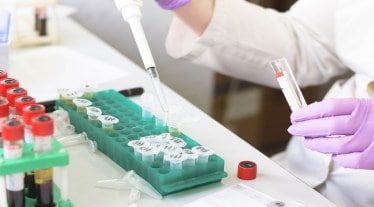By Vikram Batra
The journey to diagnosis for rare disease patients is often long and arduous, spanning several years and numerous medical consultations. Patients commonly endure multiple misdiagnoses before finally receiving an accurate identification of their condition. This diagnostic odyssey brings physical discomfort and emotional distress to patients and presents complex challenges for healthcare professionals.
Understanding Rare Diseases
Rare diseases are like puzzles with missing pieces. Imagine there are thousands of these puzzles affecting millions globally, yet each one is unique and baffling. In the United States, the Food and Drug Administration defines rare diseases as those that affect fewer than 200,000 people.1 With approximately 7,000 known rare diseases globally, impacting around 400 million individuals2, obtaining proper diagnosis and treatment remains a formidable task. Despite the growing recognition of these diseases, pharmaceutical investment in their development and commercialization has historically lagged due to economic constraints and limited disease awareness. However, recent efforts in rare disease research and drug approvals signal a positive trajectory for addressing these challenges.
Importance of Accelerating Diagnostic Journeys
Speeding up the diagnostic process for rare diseases holds immense importance for both patients and healthcare systems. Early diagnosis facilitates timely treatment and alleviates patient suffering. It also empowers physicians to provide more effective care, reducing misdiagnosis rates and potentially saving lives. Moreover, accelerated diagnostics lowers overall treatment costs by minimizing misdiagnosis-related expenses.
Challenges in Accelerating Diagnostic Journeys
However, speeding up that diagnostic journey for rare diseases is not easy. Several obstacles get in the way. It starts with tackling awareness, which can be quite low given the small, affected population. Patient advocacy groups can help here.
Next, we know the diagnosis can be complex. The statistic is that people with rare diseases suffer for five to seven years before receiving a correct diagnosis. During this time, patients are going from one physician to another, trying to find one who has the necessary expertise for an accurate analysis. There is much heartbreak and frustration, and in some cases, it may be too late if the disease is terminal.
The third obstacle deals with treatment choice. These rare diseases and their treatment options are complex. They require extensive scientific and clinical messaging to ensure the physicians – as well as the patients – understand the benefits of treatment. Education is exceptionally critical.
Access to therapy is also a very cumbersome process. These are expensive treatments and involve a significant burden in navigating insurance and managed care processes. Patients who are suffering will need considerable support to gain access.
Another obstacle is patient management. Support programs are critical to provide ongoing education and assistance. It is a long and complex cycle from disease identification to diagnosis to treatment, so these patient support services will play a key role in ensuring strong adherence to treatment.
The final obstacle is research and development. The small population of patients for a particular rare disease makes recruiting for clinical trials challenging. It also limits the ability to study patient dynamics.
Thankfully, there are ways to overcome these challenges. From modern analytics to traditional discussion, here are some ways to help end the scourge of rare diseases.
Technological Solutions
Advancements in technology, particularly artificial intelligence (AI) and machine learning (ML), offer promising solutions to enhance rare disease diagnosis. AI/ML algorithms enable the analysis of vast amounts of patient data, uncovering patterns and insights that may elude traditional methods. Genetic testing and personalized medicine further enhance diagnostic accuracy, guiding tailored treatment approaches for individual patients.
Collaborative Efforts
Collaboration among healthcare professionals, researchers, pharmaceutical companies, patient advocacy groups, and policymakers is paramount in accelerating diagnostic journeys for rare diseases. Successful initiatives and partnerships underscore the importance of a multidisciplinary approach, leveraging collective expertise and resources to address the unique challenges posed by rare diseases.
Patient-Centric Approaches
A patient-centric approach is essential in navigating the complexities of rare disease management. Empowering patients through advocacy, support networks, and personalized care models ensures their needs are prioritized throughout the diagnostic journey and treatment process. Patient support programs play a key role in facilitating access to expensive treatments, promoting treatment adherence, and improving health outcomes.
The road ahead
The future of rare disease diagnostics holds promise with continued advancements in ML, data science, and digital tools. These technologies offer unprecedented opportunities to expedite diagnosis, optimize treatment strategies, and develop novel therapies. By harnessing the power of AI/ML and fostering collaborative efforts, the healthcare community can revolutionize rare disease management, providing hope and improved outcomes for millions worldwide.
(The author is a Principal, Decision Science, Axtria Inc. Views expressed are personal and do not reflect the official position or policy of the FinancialExpress.com.)
